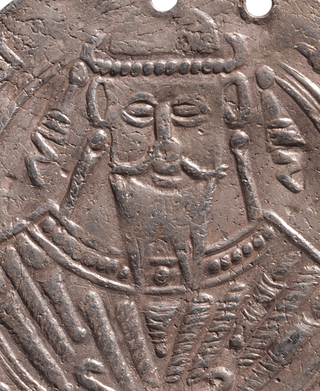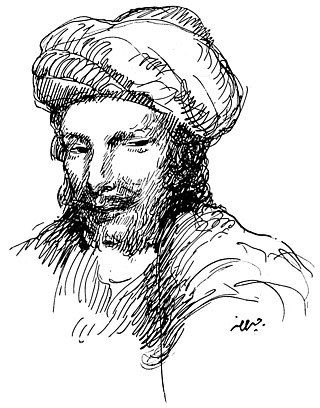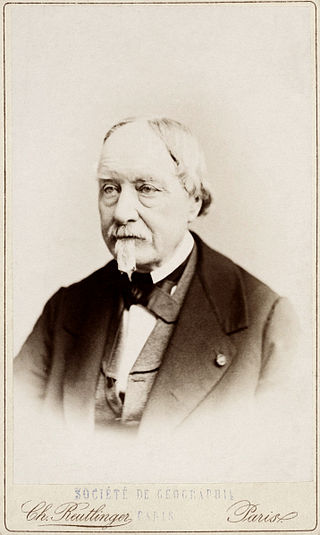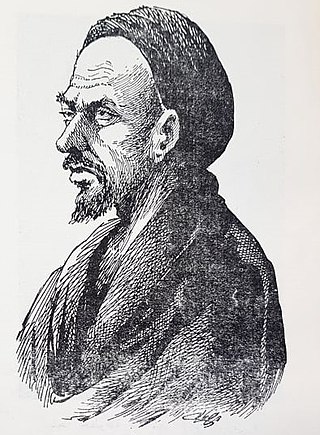Related Research Articles

Abū Jaʿfar ʿAbd Allāh ibn Muḥammad al-Manṣūr usually known simply as by his laqab al-Manṣūr (المنصور) was the second Abbasid caliph, reigning from 136 AH to 158 AH succeeding his brother al-Saffah. He is known for founding the 'Round City' of Madinat al-Salam, which was to become the core of imperial Baghdad.

The Tahirid dynasty was an Arabized Sunni Muslim dynasty of Persian dehqan origin that ruled as governors of Khorasan from 821 to 873 as well as serving as military and security commanders in Abbasid Baghdad until 891. The dynasty was founded by Tahir ibn Husayn, a leading general in the service of the Abbasid caliph al-Ma'mun. For his support of al-Ma'mun in the Fourth Fitna, he was granted the governance of Khorasan.

Ja'far ibn Muhammad ibn Harun ; March 822 – 11 December 861, commonly known by his regnal name al-Mutawwakil ala Allah, was the tenth Abbasid caliph, ruling from 847 until his assassination in 861. He succeeded his brother, al-Wathiq, and is known for expanding the empire to its maximum extent. He was deeply religious, and is remembered for discarding the Muʿtazila, ending the Mihna, and releasing Ahmad ibn Hanbal. He is also known for his tough rule, especially with respect to non-Muslim subjects.

The Saffarid dynasty was a Persianate dynasty of eastern Iranian origin that ruled over parts of Persia, Greater Khorasan, and eastern Makran from 861 to 1002. One of the first indigenous Persian dynasties to emerge after the Islamic conquest, the Saffarid dynasty was part of the Iranian Intermezzo. The dynasty's founder was Ya'qub bin Laith as-Saffar, who was born in 840 in a small town called Karnin (Qarnin), which was located east of Zaranj and west of Bost, in what is now Afghanistan. A native of Sistan and a local ayyār, Ya'qub worked as a coppersmith (ṣaffār) before becoming a warlord. He seized control of the Sistan region and began conquering most of Iran and Afghanistan, as well as parts of Pakistan, Tajikistan and Uzbekistan.

Abū Nuwās al-Ḥasan ibn Hānī al-Ḥakamī was a classical Arabic poet, and the foremost representative of the modern (muhdath) poetry that developed during the first years of Abbasid Caliphate. He also entered the folkloric tradition, appearing several times in One Thousand and One Nights.

Sibawayh, whose full name is Abu Bishr Amr ibn Uthman ibn Qanbar al-Basri, was a Persian leading grammarian of Basra and author of the earliest book on Arabic grammar. His famous unnamed work, referred to as Al-Kitāb, or "The Book", is a five-volume seminal discussion of the Arabic language.
Nobakht Ahvazi, also spelled Naubakht Ahvaz and Naubakht, along with his sons were astrologers from Ahvaz who lived in the 8th and 9th centuries AD.

Ya'qūb ibn al-Layth al-Saffār, was a coppersmith and the founder of the Saffarid dynasty of Sistan, with its capital at Zaranj. Under his military leadership, he conquered much of the eastern portions of Greater Iran consisting of modern-day Iran, Afghanistan, Turkmenistan, Uzbekistan, Tajikistan as well as portions of western Pakistan and a small part of Iraq. He was succeeded by his brother, Amr ibn al-Layth.
Abū Bakr Muhammad ibn al-Ḥasan ibn Duraid al-Azdī al-Baṣrī ad-Dawsī Al-Zahrani, or Ibn Duraid, a leading grammarian of Baṣrah, was described as "the most accomplished scholar, ablest philologer and first poet of the age", was from Baṣra in the Abbasid era. Ibn Duraid is best known today as the lexicographer of the influential dictionary, the Jamharat al-Lugha. The fame of this comprehensive dictionary of the Arabic language is second only to its predecessor, the Kitab al-'Ayn of al-Farahidi.

Abū Ibrāhīm Ismā'īl ibn-i Aḥmad-i Sāmāni, better known simply as Ismail-i Samani, and also known as Isma'il ibn-i Ahmad, was the Samanid amir of Transoxiana (892–907) and Khorasan (900–907). His reign saw the emergence of the Samanids as a powerful force. He was the son of Ahmad ibn-i Asad and a descendant of Saman Khuda, the eponymous ancestor of the Samanid dynasty who renounced Zoroastrianism and embraced Islam.
The Islamization of Iran was the spread of Islam in formerly Sassanid Iran as a result of the Muslim conquest of the empire in 633–654. It was a long process by which Islam, though initially rejected, eventually spread among the population on the Iranian Plateau. Iranian peoples have maintained certain pre-Islamic traditions, including their language and culture, and adapted them with Islamic codes. These two customs and traditions merged as the "Iranian Islamic" identity.

William McGuckin, known as Baron de Slane was an Irish orientalist. He became a French national on 31 December 1838. and held the post of the Principal Interpreter of Arabic of the French Army from 1 September 1846 until his retirement on 28 March 1872. He is known for publishing and translating a number of important medieval Arabic texts.
The Battle of Dayr al-Aqul was fought on 8 April 876, between forces of the Saffarid ruler Ya'qub ibn Laith and the Abbasid Caliphate. Taking place some 80 km southeast (downstream) of Baghdad, the battle ended in a decisive victory for the Abbasids, forcing Ya'qub to halt his advance into Iraq.

Abū al-Ḥasan Alī ibn al-Abbās ibn Jūrayj, also known as Ibn al-Rūmī, was the grandson of George the Greek and a popular Arab poet of Baghdād in the Abbāsid-era.
Abu'l-Hasan Mihyar al-Daylami was an Arabic-language poet of Daylamite origin during the Buyid period. Mihyar's poetry was dominated by metaphor, and he wrote in various poetic genres including ghazal, riddles, as well as writing elegies on Ali and Husayn ibn Ali.
Yunus ibn Habib was a reputable 8th-century Persian linguist of the Arabic language. An early literary critic and expert on poetry, Ibn Habib's criticisms of poetry were known, along with those of contemporaries such as Al-Asma'i, as a litmus test for measuring later writers' eloquence.
Muḥammad ibn ʿAlī ibn ʿAbd Allāh or Muḥammad al-Imām was the son of Ali ibn Abd Allah ibn al-Abbas and great-grandson of al-‘Abbas ibn ‘Abd al-Muttalib, the uncle of the Islamic prophet, Muhammad. He was the father of the two first 'Abbâsid caliphs, Al-Saffah and Al-Mansur, and as such was the progenitor of the Abbasid dynasty.
Al-Kisā’ī (الكسائي) Abū al-Ḥasan ‘Alī ibn Ḥamzah ibn ‘Abd Allāh ibn ‘Uthman, called Bahman ibn Fīrūz, surnamed Abū ‘Abd Allāh, and Abū al-Ḥasan ‘Alī ibn Hamzah of al-Kūfah was preceptor to the sons of caliph Hārūn al-Rashīd and one of the ‘Seven Readers’ of the seven canonical Qira'at. He founded the Kufi school of Arabic grammar, the rival philology school to the Basri school founded by Sibawayh.
Abu Muhammad Yahya ibn Aktham was a ninth century Arab Islamic jurist. He twice served as the chief judge of the Abbasid Caliphate, from ca. 825 to 833 and 851 to 854.
References
- ↑ Ibn Khallikan's Biographical dictionary, 3 By Ibn Khallikan, pg. 517-520
- ↑ Encyclopedia of Arabic literature, Volume 2 By Julie Scott Meisami, Paul Starkey, pg.525
- ↑ The Fall of the Idigo Jackal, By McComas Taylor, pg. 3
- ↑ E. J. Brill's first encyclopaedia of Islam, 1913-1936, Volume 2 By Martijn Theodoor Houtsma, pg. 100
- ↑ Encyclopedic Survey of Islamic Culture. By Mohamed Taher, pg. 84
- ↑ Islam's Contribution to Science, By Husain Muzzafar, S. Muzaffar Husain, pg. 31
- ↑ Iran. - By Yahya Armajani, pg. 67